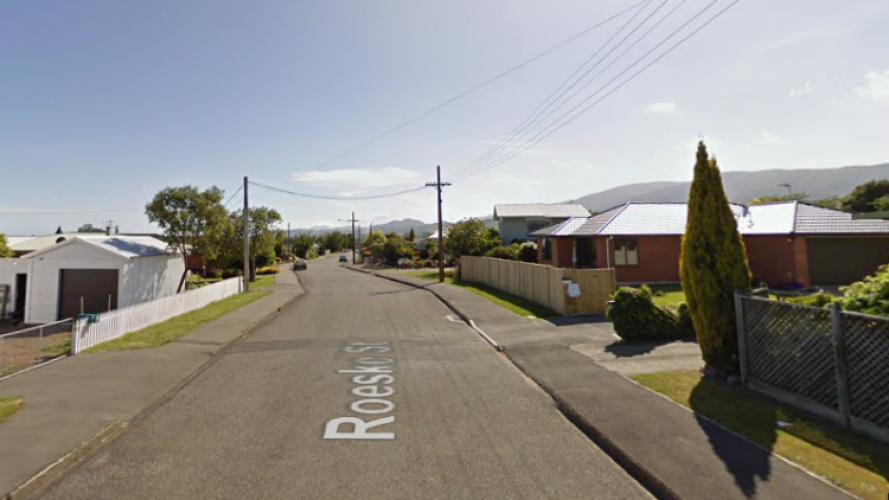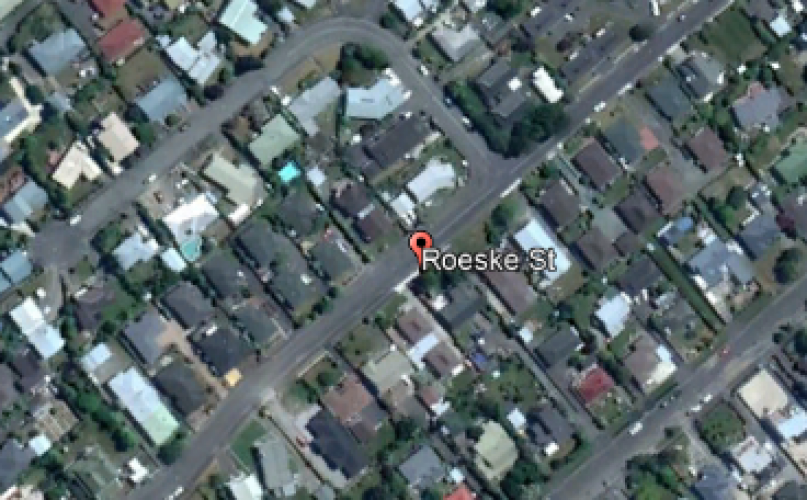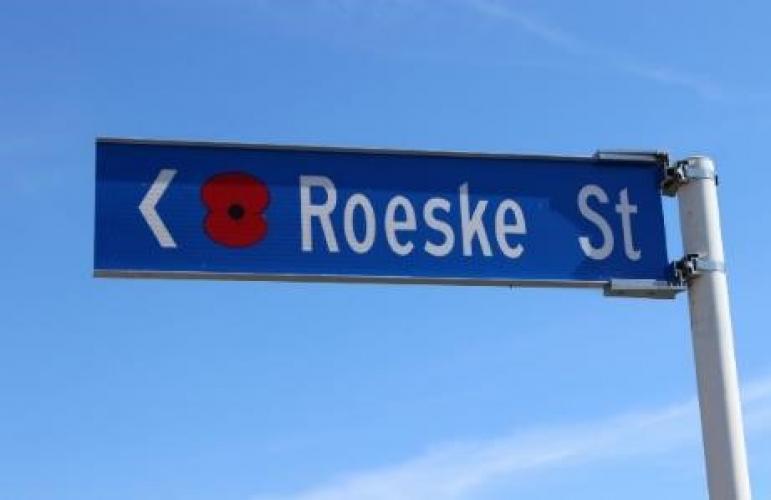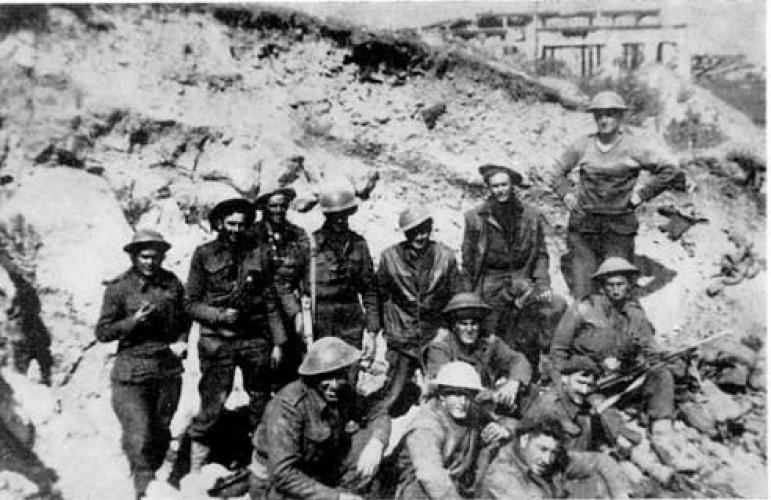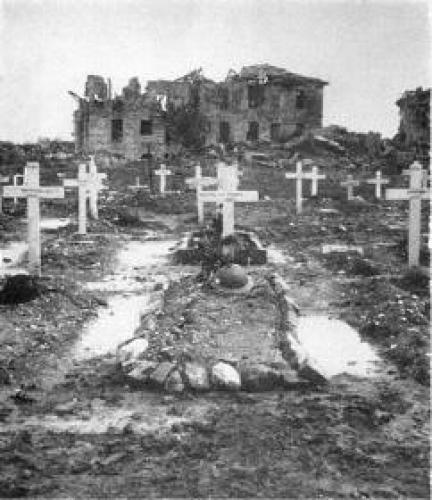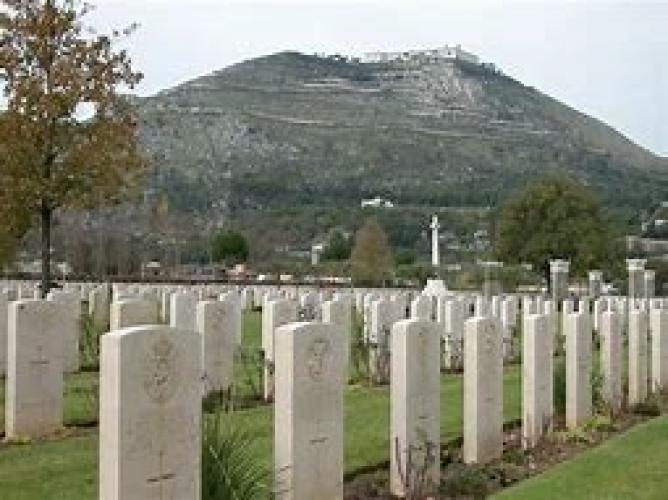245 Roeske Street Richmond, new street sign 2019
Reason for the name
This street in Richmond is named in honour of Corporal Charles William Roeske, 26th Battalion 2NZEF who was killed in action at Monte Casino in Italy during World War 2.
Fallen servicemen have been remembered across Tasman district in various ways including the naming of streets and buildings, the planting of trees and the installation of monuments. In conjunction with the 100-year anniversary of the signing of the armistice that ended the fighting between Germany and the Allies during World War I, Tasman District Council installed new street signs acknowledging the service of fallen soldiers from Richmond. The move comes after the Richmond Waimea RSA asked the council to take part in the Poppy Places project by adding poppies to street signs named after fallen soldiers.
Richmond Waimea RSA president Ross Norgate and Tasman District Council’s Megan Bell managed the project. Tasman mayor Richard Kempthorne said the council was proud to be part of the project.
Author: The Poppy Places Trust
18406 Corporal Charles William Roeske joined the 26th Infantry Battalion during World War 2. Prior to enlistment he was a Winch Driver and he was single. Charles Roeske was the son of August Franz and Emily May Roeske, of Richmond, Nelson.
Charles Roeske was killed on 17 March 1944 in Italy in the battle of Monte Cassino He was aged 25. He is buried in the Cassino War Cemetery, Italy X. F. 6.
The 26th Battalion was an infantry battalion of the New Zealand Military Forces, which served during the Second World War as part of the New Zealand 2nd Division. Raised in May 1940, it fought in the Battle of Greece, the North African Campaign and the Italian Campaign. It finished the war in Trieste and was disbanded in December 1945.
The battalion participated in the Italian Campaign, fighting in actions at Orsogna and later at Cassino. It finished the war in Trieste and remained there for several weeks, until the large numbers of Yugoslav partisans also present in the city withdrew. Not required for service in the Pacific theatre of operations, the regiment was disestablished in late 1945. During the war, the 26th Battalion lost nearly 430 officers and men, either killed in action or died of wounds. Just over 400 personnel were made prisoners of war, half during the fighting in Libya in late 1941.
Nineteen days after it had entered Cassino the 26th battalion left it for the last time. It was not the same battalion which had confidently awaited the arrival of the bombers on the morning of 15 March, (Charles was killed on 17 March) eager to do what the Americans had failed to accomplish. Only a handful of those men remained fit. Fifty-five had lost their lives and 128 had been wounded. ‘Battle casualties' and sickness accounted for nearly seventy others, and there were many more unfit for duty. Those who survived carried scars hidden from sight and which only time would heal. As a supreme test of endurance and courage the battle for Cassino was to become a byword throughout the Division and the English-speaking world.
Historical Background
On 3 September 1943 the Allies invaded the Italian mainland, the invasion coinciding with an armistice made with the Italians who then re-entered the war on the Allied side. Progress through southern Italy was rapid despite stiff resistance, but by the end of October, the Allies were facing the German winter defensive position known as the Gustav Line, which stretched from the river Garigliano in the west to the Sangro in the east. Initial attempts to breach the western end of the line were unsuccessful. Operations in January 1944 landed troops behind the German lines at Anzio, but defences were well organised, and a breakthrough was not actually achieved until 18 May, when Cassino was finally taken. The site for Cassino War Cemetery was originally selected in January 1944, but the development of the battle during the first five months of that year made it impossible to use it until after the Germans had withdrawn from Cassino. During these early months of 1944, Cassino saw some of the fiercest fighting of the Italian campaign, the town itself and the dominating Monastery Hill proving the most stubborn obstacles encountered in the advance towards Rome. The majority of those buried in the war cemetery died in the battles during these months. There are now 4,271 Commonwealth servicemen of the Second World War buried or commemorated at Cassino War Cemetery. 289 of the burials are unidentified. Within the cemetery stands the Cassino Memorial which commemorates over 4,000 Commonwealth servicemen who took part in the Italian campaign whose graves are not known

